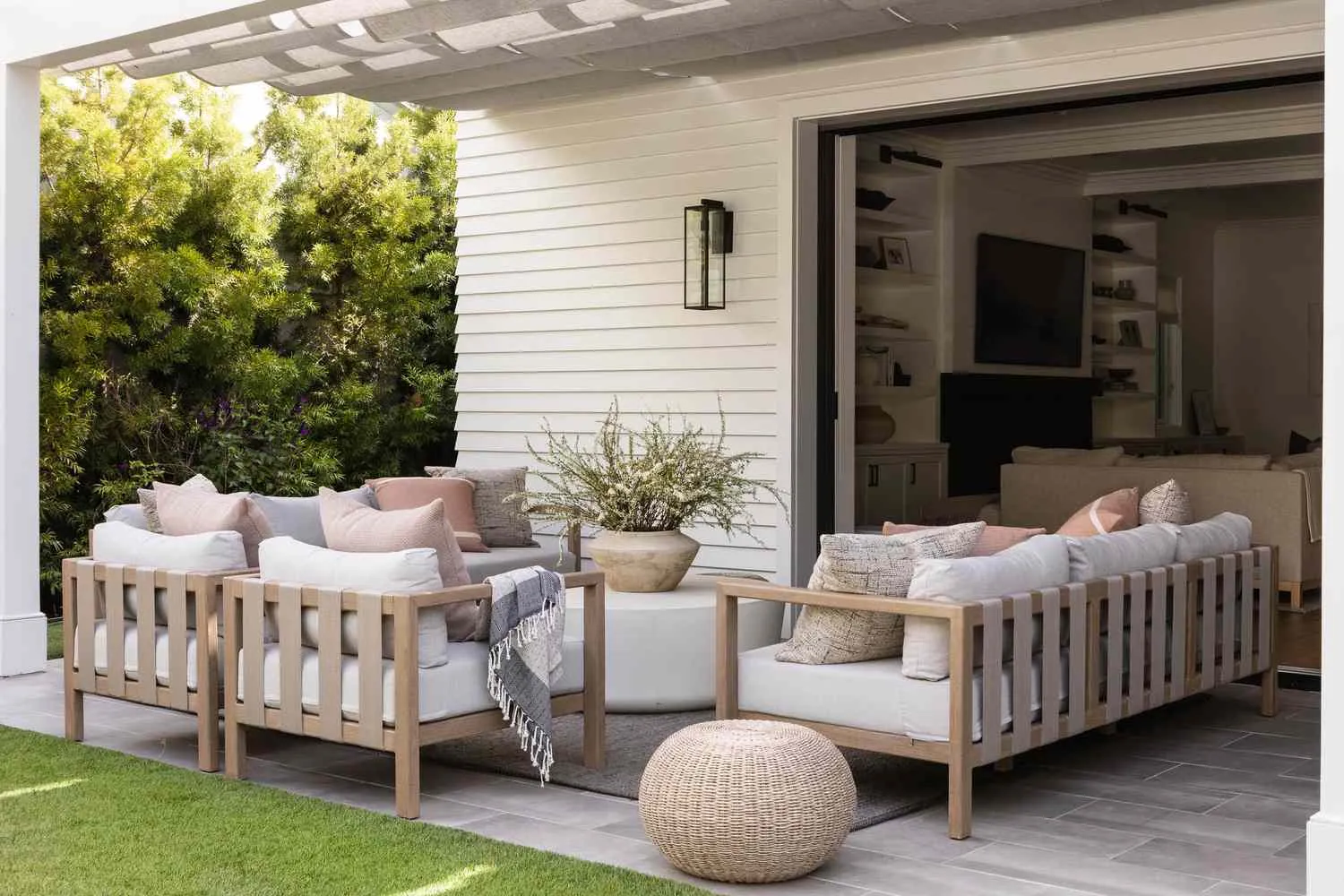What is Backyard Kitchen Decor
Backyard kitchen decor is all about transforming your outdoor space into a functional and stylish area for cooking, dining, and entertaining. It goes beyond simply placing a grill in your backyard; it involves thoughtfully designing a space that complements your home and lifestyle. The goal is to create an inviting outdoor environment where you can prepare meals, enjoy company, and relax in comfort. This includes everything from the layout and appliances to the furniture and decorative elements you choose. A well-designed backyard kitchen can significantly enhance your home’s value and provide a unique space for creating lasting memories.
Benefits of Backyard Kitchen Decor
Investing in backyard kitchen decor offers numerous advantages that extend beyond mere aesthetics. Firstly, it dramatically enhances your home’s value by adding a desirable feature that appeals to potential buyers. Furthermore, it transforms your outdoor space into an entertainment hub, allowing you to host gatherings with ease and style. Imagine preparing meals outdoors while enjoying the fresh air and natural surroundings. A well-designed backyard kitchen also promotes a healthier lifestyle by encouraging outdoor activities and cooking. It provides a convenient and enjoyable way to prepare meals, reducing reliance on indoor cooking during warmer months. Finally, it creates a personalized retreat where you can unwind and savor moments with family and friends.
Planning Your Backyard Kitchen Decor
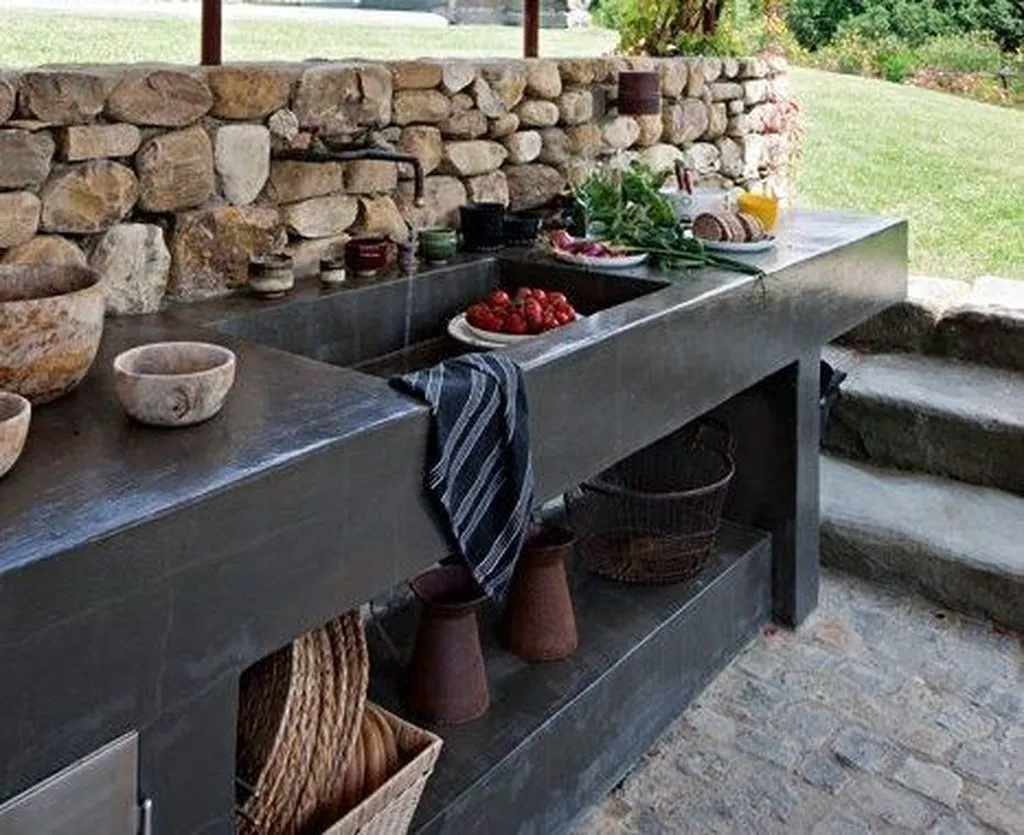
Before you dive into the exciting world of backyard kitchen decor, careful planning is essential to ensure a successful outcome. Begin by assessing your available space and considering how you intend to use the area. Think about the type of cooking you enjoy and the features you want to include, such as a grill, stovetop, refrigerator, or sink. Determine your budget early on to guide your choices and prevent overspending. Research different design styles and gather inspiration from magazines, websites, and showrooms. Consider the layout and traffic flow within the kitchen, ensuring easy access to all elements. This planning stage is vital for creating a functional and visually appealing outdoor kitchen that meets your needs.
Choosing the Right Space
Selecting the right location for your backyard kitchen is a critical step. Ideally, choose a space that is easily accessible from your home and provides a natural flow to other outdoor areas, such as a patio or deck. Consider factors like sunlight exposure, prevailing winds, and proximity to utilities such as water and electricity. Ensure the area is level and stable enough to support the kitchen’s structure. If possible, opt for a location that offers some degree of privacy and protection from the elements. Think about the view from the kitchen and how it complements the overall aesthetic of your backyard. Assessing these aspects early on will significantly contribute to the success of your backyard kitchen decor project.
Consider the Climate
Your local climate will heavily influence the design and materials used in your backyard kitchen. In regions with harsh winters, consider incorporating features that can withstand freezing temperatures, such as durable appliances and weather-resistant countertops. If you live in a sunny area, think about adding shade structures like pergolas or umbrellas to provide relief from the heat. In areas with high humidity, select materials that resist moisture and mildew. Furthermore, consider the direction of the prevailing winds to ensure comfortable cooking conditions. By considering climate-specific challenges, you can create an outdoor kitchen that is not only beautiful but also functional and long-lasting, regardless of the weather.
Essential Elements for Backyard Kitchen Decor
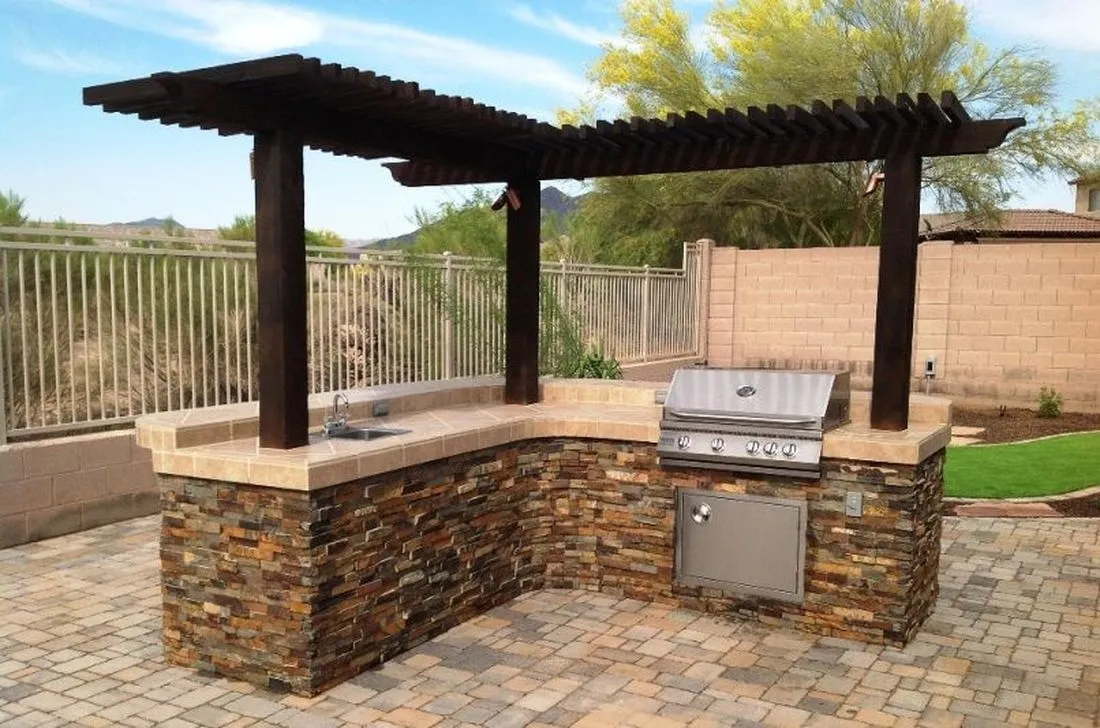
Creating a well-equipped backyard kitchen involves incorporating several essential elements. These components work together to provide a functional and enjoyable cooking and dining experience. This includes the cooking and prep area itself, the seating and dining arrangement, and the storage solutions. The right elements can make your backyard kitchen a comfortable and practical space. The specifics will be determined by your budget, space, and personal preferences. Investing in quality appliances, comfortable seating, and ample storage will enhance both functionality and the overall enjoyment of your outdoor cooking experience.
Cooking and Prep Area
The cooking and prep area forms the heart of your backyard kitchen. At minimum, this will typically include a grill, but you may also choose to add a stovetop, pizza oven, or smoker. Consider the types of meals you typically prepare and select appliances accordingly. The prep area should offer sufficient counter space for food preparation, with ample room for cutting, chopping, and assembling dishes. Incorporate a sink with hot and cold water to facilitate cleaning and food preparation. The arrangement should allow for easy access to cooking tools, ingredients, and serving items. Choosing durable, weather-resistant countertops and a layout that promotes efficient workflow is essential for a comfortable and enjoyable cooking experience.
Seating and Dining Area
The seating and dining area is crucial for creating a social and welcoming atmosphere in your backyard kitchen. Select comfortable and weather-resistant furniture, such as outdoor dining tables, chairs, and bar stools. Consider the size of your gathering and choose furniture accordingly. Optimize the layout to encourage conversation and interaction. Incorporate elements such as an outdoor bar or a cozy seating area with comfortable cushions and pillows to enhance the overall ambiance. Position the dining area in a location that offers shade, privacy, and a pleasant view. Using durable, easy-to-clean materials is essential for outdoor dining furniture. This will ensure that the seating and dining area becomes a favorite spot for enjoying meals and entertaining guests.
Storage Solutions
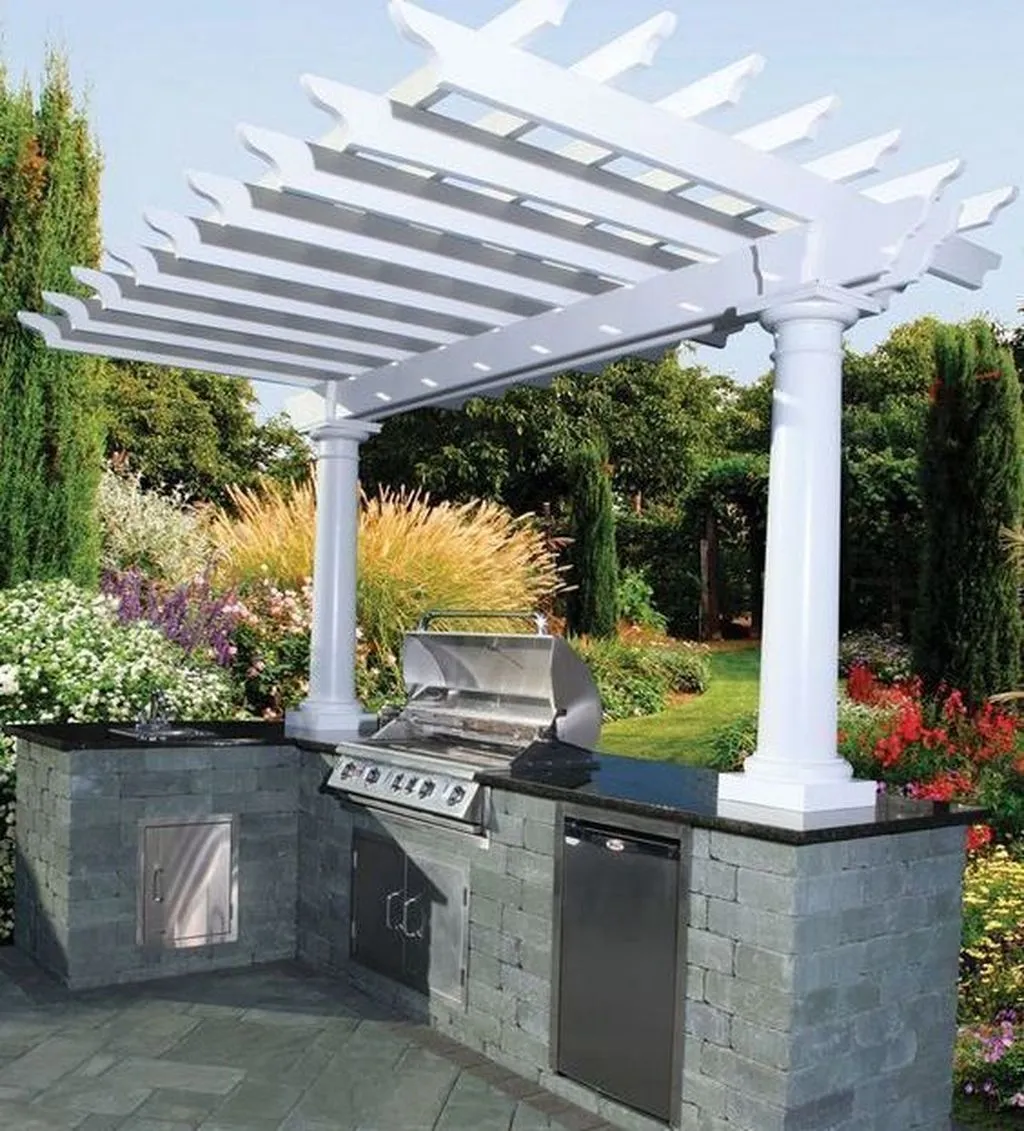
Adequate storage solutions are vital for keeping your backyard kitchen organized and clutter-free. Consider incorporating cabinets, drawers, and shelves to store cooking utensils, plates, serving dishes, and other essentials. Choose weather-resistant materials that can withstand the elements. Designate specific areas for different types of items, making them easy to find when you need them. Consider including a built-in refrigerator or beverage cooler to keep drinks and perishable foods chilled. Plan for ample storage space to accommodate all your cooking and dining needs, allowing you to keep the space clean and efficient. Strategically placed storage solutions contribute to the overall functionality and aesthetic appeal of your outdoor kitchen.
Adding Decor and Ambiance to Backyard Kitchen
Once the functional elements are in place, it’s time to focus on the decor and ambiance to create an inviting outdoor kitchen. The right decor can enhance the overall style of the space. This includes selecting attractive accessories, lighting, and materials that complement your home’s design. Add personal touches such as artwork, potted plants, and decorative objects to create a unique and inviting space. Consider using outdoor rugs to define the dining and seating areas and add warmth to the space. By thoughtfully incorporating decor elements, you can transform your backyard kitchen into an extension of your indoor living space and create a welcoming environment for entertaining and relaxation.
Lighting Ideas
Effective lighting is essential for extending the use of your backyard kitchen into the evening hours. Consider installing a combination of ambient, task, and accent lighting to create the desired mood. Ambient lighting can be achieved with string lights, lanterns, or overhead fixtures to provide general illumination. Task lighting, such as under-cabinet lights or spotlights, is helpful for cooking and food preparation. Accent lighting, such as spotlights on trees or architectural features, can add visual interest and enhance the ambiance. Choose weather-resistant fixtures and install them strategically to create a warm and inviting atmosphere. Consider adding dimmer switches to adjust the lighting levels according to the occasion.
Choosing the Right Materials
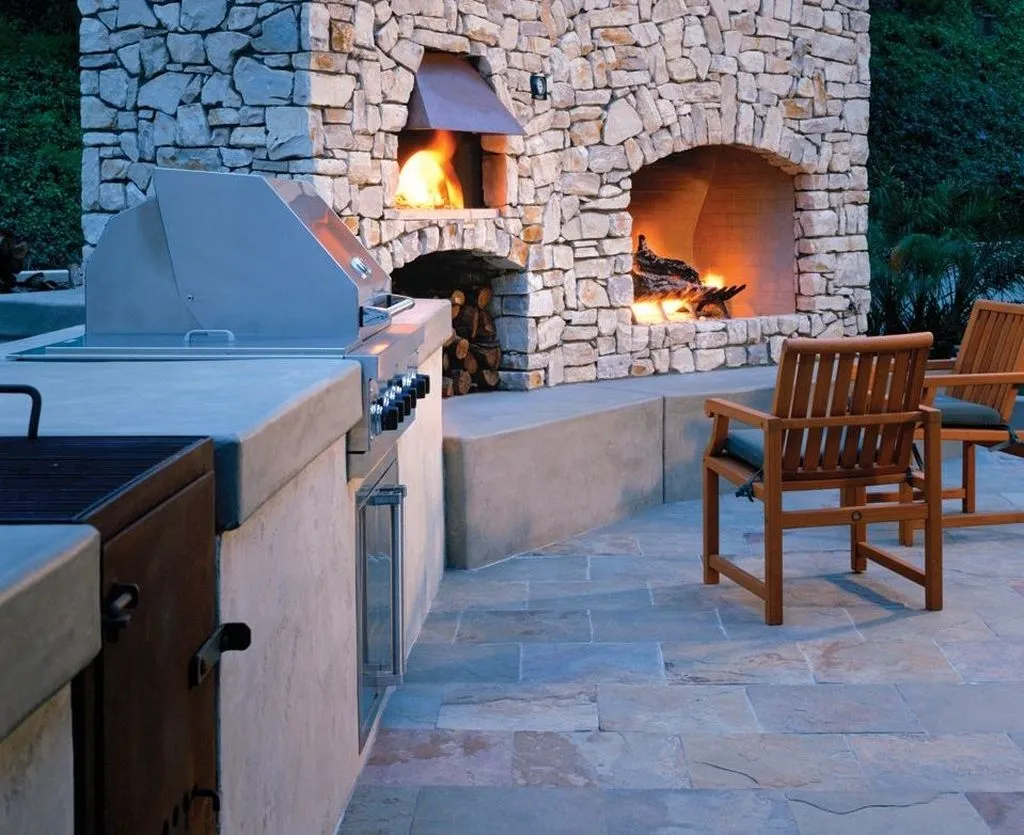
The materials you choose will significantly impact the durability, style, and maintenance requirements of your backyard kitchen. Opt for weather-resistant and low-maintenance materials, such as stainless steel, concrete, brick, and natural stone. These materials can withstand the elements and require minimal upkeep. Consider the overall aesthetic you want to achieve and select materials that complement your home’s design. Think about the color and texture of the materials and how they will enhance the look and feel of your outdoor kitchen. Choosing durable and aesthetically pleasing materials is an important step toward creating a lasting and beautiful outdoor kitchen.
How to Get Started with Backyard Kitchen Decor
Embarking on your backyard kitchen decor journey starts with a clear vision and a well-defined plan. Start by sketching out your ideas and creating a detailed list of the elements you want to include. Research different design styles and gather inspiration from various sources, like magazines and online platforms. Start by assessing your budget and prioritizing the elements that are most important to you. Determine the size and layout of your kitchen and begin to plan your design. This should include space for prep, cooking, seating, and storage. Then, once your plan is ready, you can begin to source materials, appliances, and furniture. The key is to break down the project into manageable steps and take it one step at a time.
Creating a Budget
Creating a realistic budget is crucial for any backyard kitchen project. Start by researching the costs of different appliances, materials, and labor. Consider the overall scope of your project and how you plan to allocate your funds. Break down your budget into categories, such as appliances, countertops, cabinets, and installation. Be sure to include a contingency fund to cover unexpected expenses. Compare prices from different suppliers and contractors to ensure you’re getting the best value. Set priorities and consider what elements are most important to you to make informed decisions. By developing a clear budget, you can prevent overspending and stay on track throughout the project.
DIY vs Hiring Professionals
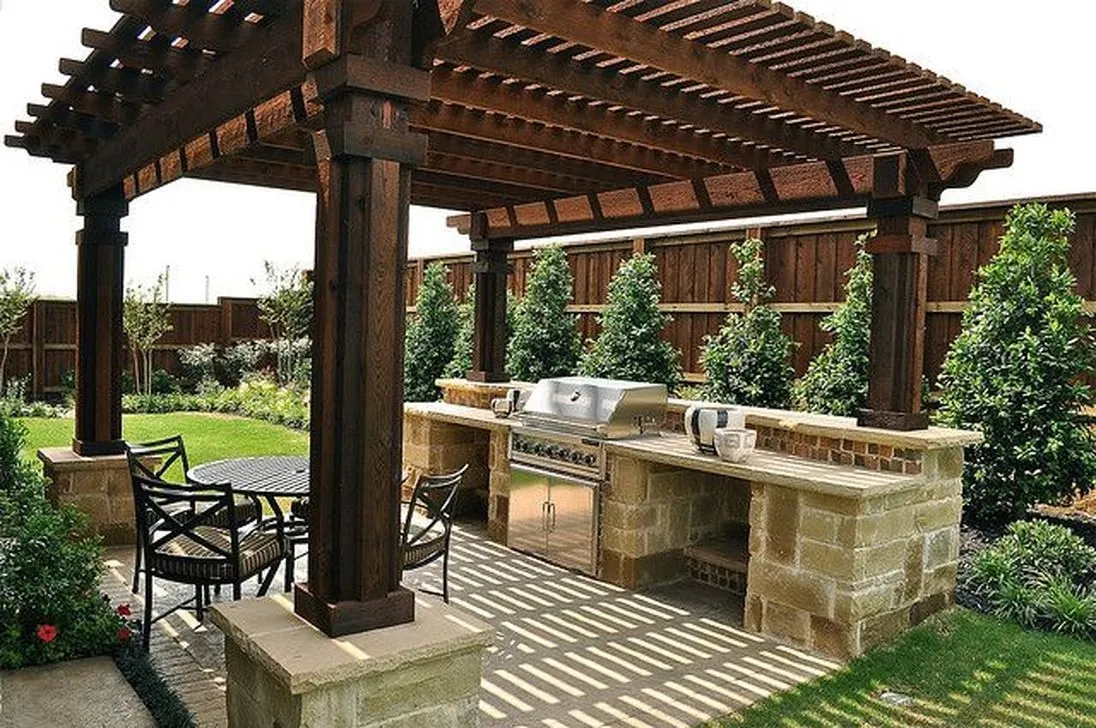
Deciding between DIY and hiring professionals depends on your skills, budget, and the complexity of your project. If you’re comfortable with construction and have experience in building, you can consider tackling some aspects of the project yourself. However, for complex tasks such as electrical work, plumbing, or gas line installation, it’s best to hire licensed professionals to ensure safety and compliance with local codes. Hiring professionals can save you time, reduce stress, and ensure a high-quality outcome. Weigh the pros and cons of each approach and select the option that best suits your needs and resources. Consider getting multiple quotes from different contractors and compare their services and pricing to make an informed decision.
